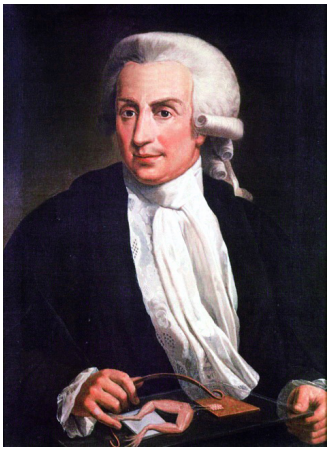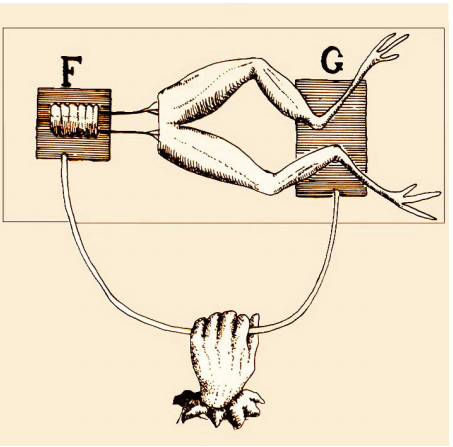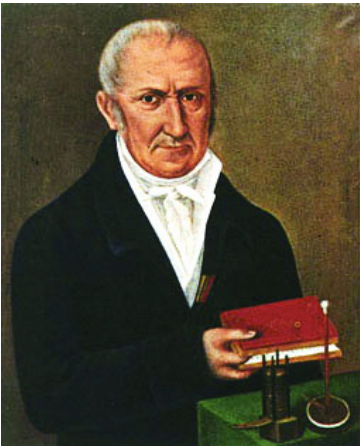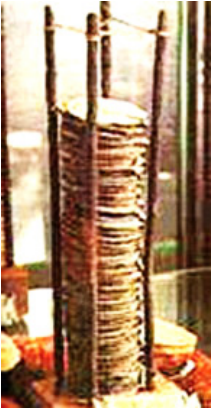You can play with your mobile phone while walking, thank you for this "trembling frog leg"
Author:Institute of Physics of the Ch Time:2022.06.21
Without the real story below, no one would think that the world where human beings entered electricity were related to frog legs.
Many people know that the battery is invented by Italian scientist Alexandro, but behind this invention, there is another credit by another scientist. · Gavani.

Louis Gavani
Gavani's discovery was purely accidental. On November 6, 1786, Gavani accidentally touched the frog legs placed in the iron plate with a copper operating knife when dissecting the frog. He found the frog legs. After twitching, this incident caused Gavani's curiosity.
At that time, people knew that people were limited to electric phenomena such as rubbing calls and thunder and lightning. Gavani speculated that the convulsions of frog legs must have electricity, but where did this electricity come from? In order to explore it, Gavani took the experiment carefully, and the figure below shown.

He chose different weather such as sunny days and rainy days, chose different moments of the day, chose iron screens, copper wires, iron plates and various metals, and also chose glass, rubber, rosin, stones, wooden boards, etc. He touched the frog legs with a variety of things, and found that the frog legs were sometimes moving, sometimes not moving, sometimes weak, and sometimes stronger.
In 1789, he wrote the results of observation as "the role of electricity on muscle movement" as the paper. Among them, he proposed two conclusions: First, the frog legs were motionless and had nothing to do with external electricity; the other was that there was a power supply in the frog nerves, which caused the current of frog leg twitching. Rame this electricity to "animal electricity".
It is a pity that Gavani's two conclusions were wrong, so they missed the opportunity to invent battery. Although the conclusion is wrong, Gavani is still contributed. His discovery has aroused the attention of other scientists to electric phenomenon, and has since opened the door to the Electric World.
Among the many scientists who are interested in Gavani experiments, a very important character is Alexandro Fusha.

Alexandro
In 1745, he was born in the beautiful small town of Italy. Fuso has received good family education since he was a child. He likes literature and natural sciences very much. He especially likes to read literary books and do electrical experiments. He has his own special laboratory, which not only successfully produced the first friction -off motor, but also invented the static electricity meter that measures the level of electricity. High interest in electrical experiments made him step by step, and also made him earlier noticing Gavani's experiments and seized the opportunity of invention in a timely manner.
Between 1792 and 1796, while he was a professor of physics at the University of Pavia, he used his spare time to repeatedly conduct hundreds of experiments on the "frog legs". He found that the conclusion of Gavani's "animal electricity" was vague. As a physicist, he naturally focused his attention on the metal rod that came into contact with frog legs. He selected various metal materials tests, and finally revealed the more essential factors of this phenomenon. As long as two different metals are in contact, even if they are not frog legs, but wet cardboard, wet leather or water -soaked sponge cavernous sponge There will be currents. The discovery of Fujia ended the "animal electricity" statement for 10 years and laid the foundation for the invention of the battery.
Volume tested a variety of metals, and also distinguished the "activity" of different metals to generate current according to the strength of the current. In accordance with the strength of "activity", he excreted the order of zinc-lead-tin-iron-iron-copper-silver-gold. He used experiments to prove that when two different metals in the series were in contact, the front metal was negatively charged and the back was positive.
Then, the voltage with zinc and copper pieces was sandwiched with salt water, and it was stacked layer by layer to form a pile to make a volt battery.
Later, he used zinc chips and copper pieces as electrodes, put them in small cups full of saline or diluted acids, and connected many of the same small cups of electrodes to form a battery.
On March 20, 1800, a letter from Sir, the president of the Royal Society of London announced his invention, the title used was "the electricity generated by the contact of different conductive substances." In the future, Fu Zao made multiple demonstrations with electric heaps at the rally of scholars. Voltage uses experiments to prove that this kind of battery can send out an electric shock without charging, thinking that it is "inexhaustible and inexhaustible." Although the Fa Dan pile was very primitive and humble, at the time, it was seen as a very magical invention.

Following electric piles invented that year
The dry battery we use now is a modified volt battery. The ammonium chloride in the dry battery instead of salt water, the graphite rod in the center is replaced by the copper plate, and the shell is still based on zinc skin.
There are many batteries in the world today, from flashlights to electronic watches, mobile phone to computer, from cars to steamboats, from airplanes to submarines, and even from satellites to spacecraft.

Battery
Compared with the large family of the battery world today, although the battery is simple and rigid, this is the first DC power supply developed by humans. It has set a record for human use of power for the first time. It is the general source of all batteries in the world. Due to its emergence, people have obtained a stable current. Since then, it is possible that the electromagnetic effects, electrical thermal effects, and electrochemical effects of the current are possible. Bring physics and even other disciplines into a real revolution, and even starting from electricity, bringing the world into a new era of leap development. Faju Museum

After the death of Fujia on March 5, 1827, at the birthplace of the battery, the beautiful lakeside town Komo City, the local people memorized the great inventor Fu, built a Fugao Temple, also known as the Faju Museum. The museum showed the original equipment and documents that did the experiment that did the experiment that year more than 200 years ago.
Source: "365 days in the history of science", slightly deleted
Author: Wei Fengwenwu Yi
Edit: Zhang Runxin
Reprinted content only represents the author's point of view
Does not represent the position of the Institute of Physics of the Chinese Academy of Sciences
If you need to reprint, please contact the original public account
Source: Original Reading
Edit: Garrett

- END -
Rush on the hot search!Closure

Source: CCTV News Client, CCTV Finance, Polar News, WeiboThe copyright belongs to ...
The wedding company bought the vase and returned after using it.
Text/Jiang DebinAccording to an article published by the public account of the Hangzhou Internet Court, a wedding company purchased 60 vases online and applied for returns on the 6th day after receivi